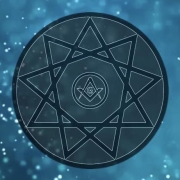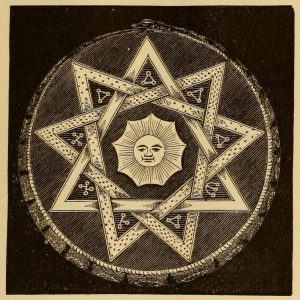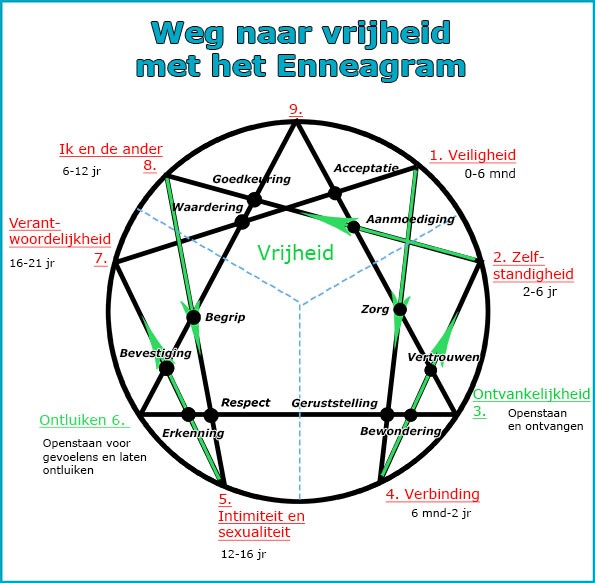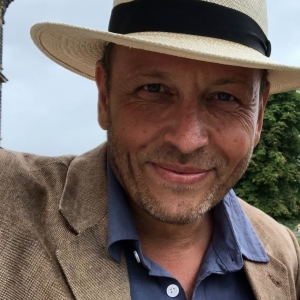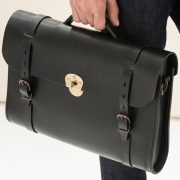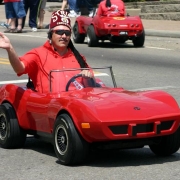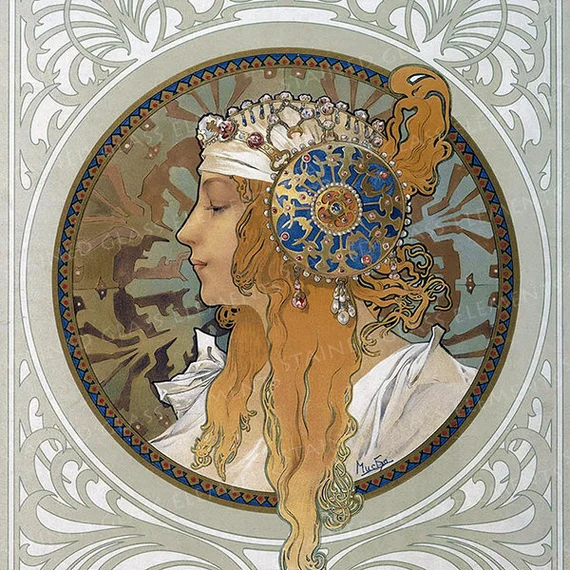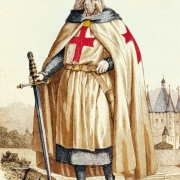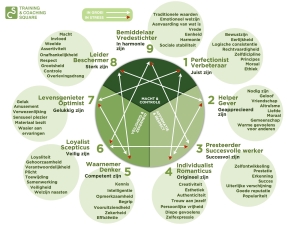
Are there similarities in the methodology of the Enneagram and Masonic thought? And if there are, how does this model translate as a tool for the personal growth of a Mason?
In this article, I will look for the similarities with Freemasonry and its practical use in refining character. Similarities that are not only numerological and symbolic, but especially emotional.
I am a certified Enneagram Coach and have followed my training at the Enneagram College of Willem-Jan van de Wetering. My acquaintance with the Enneagram came about 8 years ago. I was invited for an introductory course. In the business world, I had already become acquainted with a number of tools to describe personalities, but I felt that something was missing. The models I knew, such as The Big Five, the Rose of Leary, MBTI, Spiral Dynamics and Belbin. Typical of almost all models, in my opinion, is the lack of a holistic view and too much focus on the human being in a business environment. However, people are more than just employers or employees. The human being has many facets whereby the focus on the work situation struck me as very superficial. During the introductory course, I was surprised at how typical and accurate the Enneagram was. I therefore started to study it for years and this eventually resulted in an education. This resulted in the Quantum Enneagram. I have developed this model as a holistic methodology, in which not only the Enneagram but also various psychological and social insights are used as a manual for personal growth.
Human mechanisms.
Every human being has a personal history in which, through damage and disgrace, life lessons are experienced that cause repeating behaviour patterns and/or blockages. I call them holes in the soul. Many people fill these holes in the soul with something or someone else. This partly explains the abuse of alcohol, drugs and gambling addictions, but also life partners have to fill up these gaps. Holes in the soul have to be filled by oneself, is my firm belief. A person who does not work on himself is driven by emptiness and not by fullness.
The Enneagram is a personality model that describes conscious and unconscious human behaviour, but it also provides insight into blockages and a practical solution for removing these blockages. The word Enneagram stems from the Greek ennea, meaning nine, and grammos, meaning something written or drawn. The symbol of the Enneagram is a nine-pointed star polygon. A person's behaviour and motivation can be described by means of this model. The Enneagram groups behaviour in a model of 9 personality types. The nine-pointed star you see in my presentation is a so-called Nonagram. It stands for the original typology, as I use it myself.
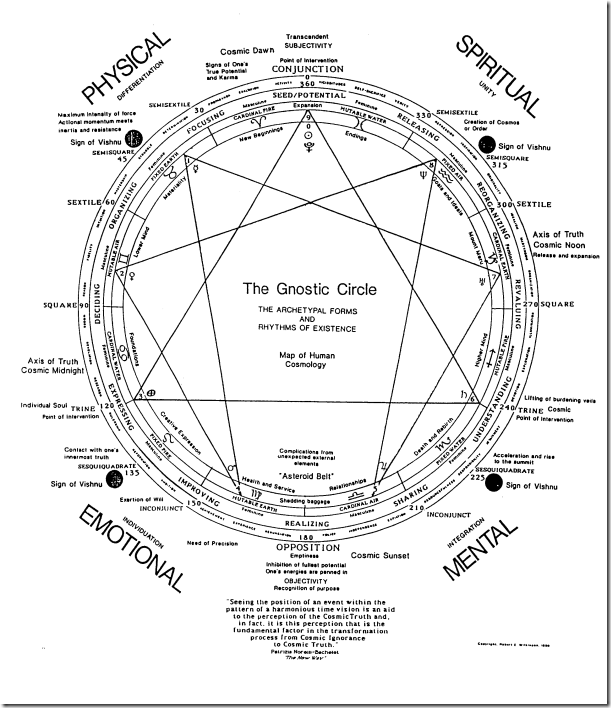
Despite the fact that scientific psychology regards the Enneagram as a pseudo-science, it is a practical and usable model. For example, direct connections can indeed be made between the behaviour of the 9 personality types and scientifically established behavioural disorders.
A few years ago, the Stanford University School of Business organised a course "Personality, self-awareness and leadership" in which the Enneagram played the leading role. The course was extremely popular.
The FBI, General Motors, Motorola, Marriott Hotels, Mitsubishi, Arthur Andersen, UC Berkeley and the US Postal Service use the Enneagram as a tool to understand individual communication styles and to help resolve conflicts between employees. At Silicon Graphics, it is part of the continuing education programme. Even clergymen from the Vatican took an Enneagram course.
The CIA and the FBI use the Enneagram as a profiling tool to help its agents describe and understand the behaviour of world leaders.
Mystical heritage?
Because there is simply too little scientifically based evidence for the widespread but incorrect historical origin of the Enneagram, I will start from the first mention of the current model.
The modern Enneagram of personality types is a modern synthesis of some ancient wisdom and traditions, but the person who originally compiled the system was Oscar Ichazo.
Perhaps a similarity with Freemasonry is that in recent years a certain legacy of the Order of the Knights Templar has been claimed. Again, there is no evidence for this. The strength, in my opinion, lies in the thought and intentions that have been adopted.
Just as Freemasonry has its roots in early Judeo-Christian thought, thought from ancient Egypt, philosophical currents from the Middle East, the thought of the Knights Templar and modern philosophers, so the Enneagram is a wonderful blend of Western mystical and occult tradition, insights from ancient Sufi, Kabbalah and even alchemical thought.
Freemasonry and the Enneagram.
Just as the first degree of Apprentice Freemasonry is the gateway to the mysteries of Freemasonry, the second degree of Companion Freemasonry is about the methods by which one advances in spiritual knowledge. Building on oneself with the tools available. In a sense, the rite of the second degree is the incorporation of the candidate into the Masonic world. One of the means to increase our capacity for the Light is found in Freemasonry in the form of a staircase; an important symbol for the second degree. Spiritual work is central to the lodge, but it has a different content and meaning in each degree. In the apprentice phase, for example, the emphasis is on self-examination, working on an attitude to life that allows for freedom in diversity. The associate is confronted with reflection on his responsibilities as a human being in a changing society.
The 9 types of the Enneagram.
Many Brothers and Sisters are already familiar with the Enneagram. For those who do not know it yet, I will give a short introduction.
Enneagram Type 1 The Perfectionist
Perfectionists are focused on perfection and say that everything can always be improved. They are principled and idealistic. They have high standards and values and judge others accordingly. They want to improve everything and are afraid of making mistakes.
They are very well organised and logical. They have high standards. They suppress anger until it erupts unexpectedly. They are wise, realistic, noble and have high morals. Ones set great store by rules and structures.
The Perfectionist
- likes structures
- sticks to rules
- thinks there is always room for improvement
- Is annoyed by mistakes
- wants to work towards a perfect world
Enneagram type 2 The Helper
Helpers are focused on helping others. They are sociable, sincere, friendly and warm. They have their hearts in the right place. Twos are always focused on others and know what they need. They sacrifice themselves to help the other. They can be sentimental and want to please others. They do not pay attention to their own needs, but want to be needed by others. They hope for the love of others by giving love to others.
Deep inside, Twos feel loneliness.
The Helper
- Focuses on others
- is not self-minded
- is always ready to help others
- seeks love and appreciation
- always wants to be there for others
Enneagram type 3 The Winner
Winners are successful and always work hard. They are ambitious, charming, competent, have lots of energy and value status. Threes often worry about their image and what others think and say about them. They are workaholics, and are very competitive. They adapt their image to the situation. They are good at leading, and never lose sight of their goals. Threes always want to win.
The Winner
- Can't stand to lose
- is goal-oriented
- knows what he wants
- Focuses on being successful
Enneagram type 4 The Romantic
Romantics are sensitive, highly creative and self-confident, but also reserved. They are emotionally honest and personal, but are often guided by moods. It goes up and down. They experience the feelings of others as if they were their own. They can feel inferior and vulnerable. Celebrants do not want to be ordinary, and that alone makes them unique.
The Romantic
- is emotionally unstable
- focuses on the finer things in life
- seeks confirmation in love
- feels misunderstood
- wants to give the world more colour
Enneagram type 5 The Observer
Observers are alert, have insight and above all overview. Fives are the observers who can isolate themselves to look at things from all sides and then come forward with a razor-sharp analysis. They do not care about clothes or image, and do not like emotions. They are calm, analytical, independent, competent, but can also be eccentric. They are calm people with a vision. And they do not stand out.
The Observer
- is short on communication
- withdraws into his thoughts
- wants to understand everything
- researches and observes
- wants to understand life
Enneagram type 6 The Loyalist
Loyalists are dedicated, security-oriented, reliable, hard-working and responsible. Loyalists need to have what is expected of them and who is responsible for what. They can work well under stress, while at the same time complaining a lot. They have problems with their self-confidence and look for confirmation. They are often too cautious and somewhat fearful. Sixes are sociable and value reliable friends and colleagues. They stand up for the weak.
The Loyalist
- Seeks certainty and resists uncertainty
- is loyal and faithful
- is not afraid to roll up its sleeves
- is less inclined to take the initiative
- likes to do everything together
Enneagram Type 7 The Adventurer
Adventurers are productive, busy, optimistic and spontaneous. They bubble with ideas and need many options to function well. They are charmers who seek adventure. They love challenges and see few problems, only solutions. They are practical but not very disciplined. Sevens like to postpone things that are not fun to do. They are sociable, fun and charming. But their impulsiveness can get them into trouble.
The Adventurer
- wants to enjoy life
- runs away from painful moments
- is always optimistic
- wants to be able to choose from many options
- can quickly come up with solutions
Enneagram Type 8 The Challenger
Challengers are powerful, strong, dominant and confident. They like to protect others, but hate weakness. They are proud people and often appear physically strong. They want control over the situation and if they do not get it, they become confrontational and intimidating. They have a big heart but make sure that others do not get too close. They rely on their own strength. Eights are the leaders of the Enneagram.
The Boss
- is powerful and comes across as strong
- always wants to be in control
- does not dare to show his vulnerability
- comes across as dominant
- thinks that others usually take the bait
Enneagram Type 9 The Mediator
Mediators are easy-going, stable, inspire trust and avoid arguments. They are friendly people who understand all points of view but find it hard to choose: "Is it yes or shall I say no?". Nines are spiritual, understanding and need time to get things done. They can also be quite stubborn. They like to bring people together to talk out a conflict, but numb themselves when problems arise in their own lives.
The Mediator
- finds it difficult to make choices
- is very satisfied
- finds it difficult to cope with arguments
- enjoys nature and tranquillity
- is sociable and accommodating
- Can be very stubborn
Nine Enneagram types are described from the point of view of their way of living. The model provides insight into your own character and the motives of others. Each of the nine personality types of the Enneagram has formed itself around a central passion. The unconscious focus that arises from this, largely determines the attitude to life and communication style of each of the nine types. The Enneagram is about returning to the essence. Every passion has its opposite in an aspect of the higher virtue of the essence. The human being is supposed to be looking for that aspect of the higher virtue that we miss.
Know thyself and it comes to you. A person who works on himself comes from fullness and not from emptiness. A certain structure of identical behaviour patterns is practically described by the Enneagram. I would like to make it clear that one personality type is not better than another, that a type 8 is not higher than a type 2 and that it is not the intention to pigeonhole people on the basis of behaviour. Each type has specific characteristics that can be effective and that are born of a reaction to the outside world.
The idea of nine divine forms. This idea was discussed by Plato as the divine forms or platonic bodies, qualities of existence that are essential and cannot be broken down into constituent parts. This idea was further developed in the third century of our era by the Neo-Platonic philosophers, especially Plotinus in his central work The Enneads.
These ideas found their way from Greece and Asia Minor south through Syria and finally to Egypt. There it was embraced by early Christian mystics known as the Desert Fathers who concentrated on studying the loss of the divine forms in ego-consciousness.
The specific ways in which these divine forms became distorted became known as the Seven Deadly Sins: anger, pride, jealousy, greed, lust and sloth. How the original nine forms, in the course of their journeys from Greece to Egypt over a century, were reduced to seven deadly sins remains a mystery.
Oscar Ichazo's work connected the Enneagram symbol with the three centres of human intelligence, Thinking, Feeling and Instinct. He called the higher, essential qualities of the human spirit the Sacred Ideas, in accordance with the Western mystical tradition. Here too we recognise the similarity with the work in Freemasonry, the Mores.
The fixations, or sins, in the Enneagram correspond directly to the 7 Deadly Sins.
The seven deadly sins are:
- Superbia (haughtiness - conceit - vanity)
- Avaritia (greed - avarice)
- Luxuria(unchastity - lust )
- Invidia (envy - jealousy - envy)
- Gula (intemperance - gluttony - gluttony)
- Ira(rage - wrath - revenge - wrath )
- Acedia (laziness - sloth - indolence)
The 7 Virtues form the growth path of the various personality types.
- Prudentia(Prudence - Wisdom)
- Iustitia(Righteousness - righteousness)
- Temperantia(Temperance - self-control)
- Fortitudo(Courage - strength - tenacity - focus)
- Fides(Faith), in Latin texts often described as Pietas
- Spes(Hope)
- Caritas(Charity-Love)
The Ennegram and the Maçonnieke Graden.
When an Apprentice Mason is promoted to the Companion Degree, two things become clear. The first revelation is that he himself is the highest judge in life. Secondly, it is made clear to him that although he has seen the Light, he is now given the tools with which he can refine his self-development. Whereas in the1st Degree, seeing the Light and looking at the inner self was important, in the2nd Degree, the interaction between man and his environment is a central theme. Or...as the website of our Grand Lodge says;
"In the pupil degree he tries to get to know himself, his deeper self. In the second or companion degree, he tests his relationship to his fellow man, and in the third or master degree, he tries to determine his attitude towards the unmentionable: that, or that which Masons symbolically refer to as the "Supreme Builder of the Universe".
Within the Enneagram, there is a corresponding development of the personality. This can be divided into positive growth and negative stress.
In both cases, a person will start to behave differently. Each type takes over the positive properties of a certain other Enneagram type, his relaxation type, when he is relaxed. When he is stressed, he takes over the bad characteristics of his stress type.
The Enneagram as a mirror.
A number of similarities with the growth and stress directions strike me.
Isn't it true that an Apprentice Mason is going to see the Light? The similarity is that, before you can grow as a human being, you first have to get to know yourself. Seeing the Light means that you realise what type you are and understand what mechanisms are driving your present behaviour.
As a Companion Freemason, it becomes clear that you will be given all the tools to allow refinement to take place. You are, as it were, put in front of a mirror to be confronted with the highest judge...yourself. You experience this confrontation when, under stress, you start to show negative behaviour or even false behaviour and realise this. Look in the mirror and see yourself. See what really drives you, your patterns and also your blind spots.
The Enneagram holds up this mirror to you.
When the mechanisms are clear, you can return to your own essence, back to your core type. An Eight will then realise who he is and the time has come for refinement. The Eight grows, becomes calmer and the true power of its personality comes to the surface. At this time, which is not without its struggles, the Eight grows into a Two. He becomes more social, protects people, starts coaching people and finds the way to his heart.
The Companion has grown into the Master.
The Enneagram as a Maconic Tool, a Ritual Journey.
Every Freemason makes a ritual journey through his Lodge. As a candidate, you encounter stumbling blocks and must empty the bitter cup. It is symbolic for the journey that every human being makes in which setbacks and resistance are part of life itself.
If you find the strength to go on, helped by your fellow man, there comes a moment when you see the Light. However, the Brotherhood clearly points out that it all comes down to you. It is your personal journey, just like another person has his own journey.
If I want to make the parallels with the Enneagram clear, I will have to go a little deeper into the Enneagram as a model. Apart from insight into one's own core type and that of others, the Enneagram has another practical application. It gives insight into the blockades, incurred during the development of every human being. The Path to Freedom within the Enneagram is a model in which the developmental phases of the child from 0 to 21 years are taken as a starting point. This cycle of 21 years is cyclic. A child from 0 to 21 years old forms, goes through puberty and grows towards adulthood. On this road, the child encounters all kinds of stumbling blocks. These stumbling blocks can be overcome, but almost everyone develops blockages.
Within the path to freedom, seven steps (themes) are taken to complete this process and arrive at our own freedom. They are the seven steps of development that we go through from birth to adulthood. Each step is important how and in what way it is developed. After 21 years of age, these stages of development naturally continue.
The steps that a person must take are: Safety; connection; independence, me and the other; sexuality and intimacy; responsibility and freedom. In these phases you also need the fulfilment of the 12 basic needs. These are: acceptance; care; reassurance; admiration; trust; encouragement; approval; respect; recognition; affirmation and appreciation.
This symbolic journey within the Enneagram follows a fixed route. 1,4,2,8,5,7,1
The 3,6, and 9 are not included. These are considered to be the influences from outside.
The Apprentice sees the Light, gets acquainted with his own personality and recognises himself. The Companion is confronted with himself and receives all the tools to work on personal refinement. I see the Path to Freedom as dealing with blockages from the past. Letting go of old things and growing through to the essence of yourself. Will we ever reach the Master Degree? I cannot guarantee it, but are we not all eternal Companions?
No pigeonholes.
In my experience during my training, but also in coaching people, almost always the same experience emerges. Recognition. A feeling as if the pieces are falling into place. But resistance also emerges. Is it really all so predictable? Can everyone be pigeon-holed?
Just like every Freemason essentially works on himself to form a perfect cubic stone, every type in the Enneagram will have to work on himself to eventually integrate. The beauty of the Enneagram lies in the fact that it does not think in pigeonholes. If every Freemason forms a cubic stone and with that the symbolic Temple of Solomon can be built, other stones are still needed to complete the construction. Each Enneagram type grows precisely by learning about other types and finding personal growth in them. The essence is found through the diversity of all people.
Still, the biggest pitfall is the narrow mindedness. When people learn about their type, they quickly think only in terms of that type. When you look at the model, you see nine boxes.
You soon notice that it goes further, when you start reading about it in recognised books like
The wisdom of the Enneagram or the Enneagram Basic Book of Riso and Hudson.
The Enneagram is meant to get people out of their pigeonholes and patterns. First awareness and then personal growth follows if you know how to break free from these. But the road to personal growth has been started and is irreversible.
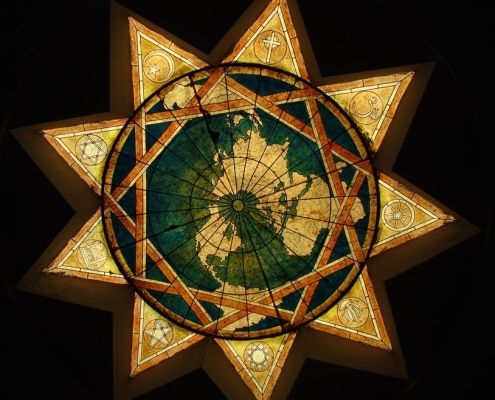
Nine is a unique numerical special number. It is a non-corruptible number.
Nine is also the number of the circumference, hence the division into ninety degrees and 360 degrees for the whole circumference. It is symbolised by the figure of the two triangles, which in turn symbolise the male and female, fire and water, mountain and cave principles. In Buddhism, 9 is the highest spiritual power; a heavenly number. The triangle is known as one of the Platonic forms. Working with a sacred geometric structure like the triangle is known from Astrology (four triangles), Sufism (three triangles or Nonagram) and Judaism (two triangles or Star of David).
The number nine plays an important role in, for example, Royal Arch Freemasonry or the Holy Royal Vault. It stands for wholeness and completion. A quote from a ritual says:
Q. How shall I know you to be a Royal Arch Mason?
A: By three times three. Three Times Three, Under a Living Arch.
As a side note, I have to say that I use the original typology. This changes the Enneagram into 3 triangles as shown below. Next to it, you can see an illustration of the Maconnique use of this form, as in the Royal Order of Scotland.
The three times letter T is also recognised in the symbol for Royal Arch freemasonry, the Triple Tau. In addition, I have already noted that the nonagram appears in the logo of the Royal Order of Scotland.
In the Enneagram process model, the number 3, 6 and 9 are not included.
The process model describes an inner journey and considers 3,6 and 9 as influences from outside. In Freemasonry, besides 3 degrees, we also know the All-Seeing Eye with a triangle and the Three Great Lights. 3 x 3 is the triple triad; completion; fulfilment; attainment;
In ancient China, 9 was the Celestial Power, 3 x 3 being the most auspicious of all the numbers in Feng Shui. It also refers to the eight cardinal directions with the ninth as the centre, as in the 'Hall of Light'. In the division of land in China, it was divided into eight outer squares for the cultivation of the land by the owners, and the central, ninth, square is a 'god square', dedicated to Shang-ti, the supreme ruler.
It is also called the 'imperial field', referring to his position as a delegate of heavenly power.
In early Judaism, the number 9 stands for pure intelligence; truth, as it produces itself when multiplied by itself.
In Kabbalism, it symbolises foundation.
The Hindus know the number of Agni, fire; the square of nine forms the mandala of eighty-one squares and leads to, and encloses, the universe.
The Mayas knew nine underworlds, each ruled by a god.
In the Scandinavian myths, Odin/Wodan hung from the Yggdrasil for nine days and nights to gain secret wisdom for mankind. Skeldi, the northern Persephone, goddess of the snow, lived on her mountain for three months and by the Niord Sea for nine months. Nine is the sacred number in Scandinavian-Teutonic symbolism. The above links to the number 9 were given to me fraternally by my Br.˙. Peter Blom.
Insights from outside, Revelations from within.
Another similarity is that the Companion works on himself, but in interaction with the outside world. The Gezel finds this interaction inside and outside the Lodge. He visits, participates in Maconnade formation, rituals and Building Pieces. The journey has begun.
It offers tools for self-reflection, self-knowledge and self-acceptance. The Enneagram helps you to look more mildly at yourself and others. It touches you to the core beyond your blind spots.
When there is interaction with the outside world and the Lodge, the Companion, if it is good, gets inspiration. He takes this inspiration with him to eventually gain renewed insight. This exchange between outside and inside, inspiration and insight, forms a dance.
The Freemason carries this dance with him all his life. It forms him and gives him the strength to continue to see the light in order to eventually receive wisdom.
In a similar way, the Enneagram is all about the dance between integration and disintegration, between stress and growth. In this way, blockades and old, negative patterns are broken through and the journey can be continued. Here, too, strength is needed to ultimately experience wisdom.
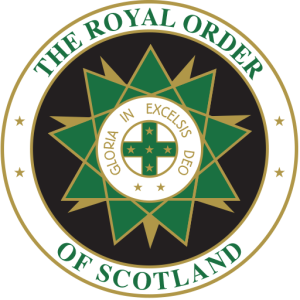
There is a big difference between male and female energy in the world. Men tend to think with their heads and work in an efficient, practical way. With men, there is, generally speaking, a focus on means, roles and goals. They are collaborative individualists.
Women, on the other hand, often think from their feelings and work in a social way.
Women generally pay more attention to the group and to harmony in the team. They are collaborative group thinkers.
The beauty of the male and female energy is also reflected in the Enneagram. Types 2, 3 and 4 are the feelers. These people generally think on the basis of emotion and are more socially oriented. Types 5, 6 and 7 are the thinkers. These people generally think with their heads and are often more individualistic. Finally, types 8, 9 and 1. These are the doers of the Enneagram. These people generally think with their heads and are often more practical.
Just as a doer must learn not to suppress his emotions, a thinker must learn not to forget to do. A hardened person, in which the male energy predominates, has lost contact with the feminine. A soft person may have beautiful feminine energy, but will have to give attention to her masculine sides.
The world in transition
We live in a time of transition. Freemasons are trying to be more conscious in life and to be a better person in society. They work to learn the Masonic lessons, in order to take the next step in individual and collective consciousness development. These lessons want to make clear to our presently evolved consciousness that for a further, more spiritual development it is necessary to approach things in a totally different way. The old forms of externalised masculinity and enclosed femininity cause suffering and misery.
In addition, the unilaterally internalised form of femininity has expressed itself in the erasure of personal boundaries. For this one-sided feminine energy wants unity at all costs, so that differences and any resulting conflicts must be hidden under the suffocating cloak of love. Manifested masculinity has created hierarchy, over-regulation and the arrogant convincing of each other's opinion, if necessary with war and terrorism.
A harmonious union of male and female energy, inspiration and insight and growth and stress is thus not only the practical journey of the Freemason to mastery, but also the recognition of oneself, on YOU, and the emotional journey in the Enneagram to freedom.
Everything revolves around movement. Movement in the internal and external world. I see it as a dance. Like atoms dancing around each other. Like planets dancing around suns. And like people dance. Movement is life. Life is pain and pain is the best teacher a person can have.
Do you also want to know what Enneagram type you are?
Here you can do an extensive test: https://www.nlp-nu.nl/online/enneagram-testen/hoofdstuk/enneagram-testen/vragen/enneagram-test/
Thierry Stravers is co-owner of Masonic Store.
He likes to combine his passion for style and elegance with his Masonic activities.
Thierry is the owner of Trenicaa marketing agency and is a board member of Loge Enlightenment No.313 O: Hoofddorp.
He is a certified Enneagram Coach and studied philosophy (Uva) and sociology (University of Edinburgh).

